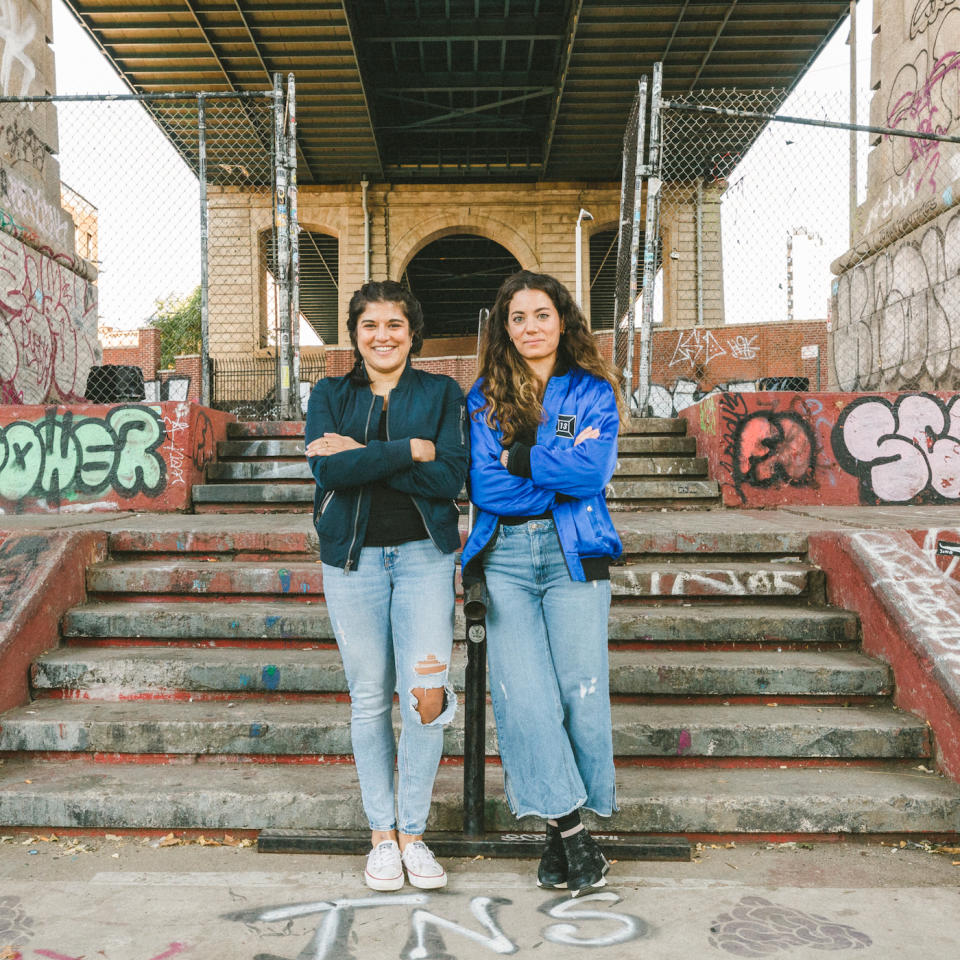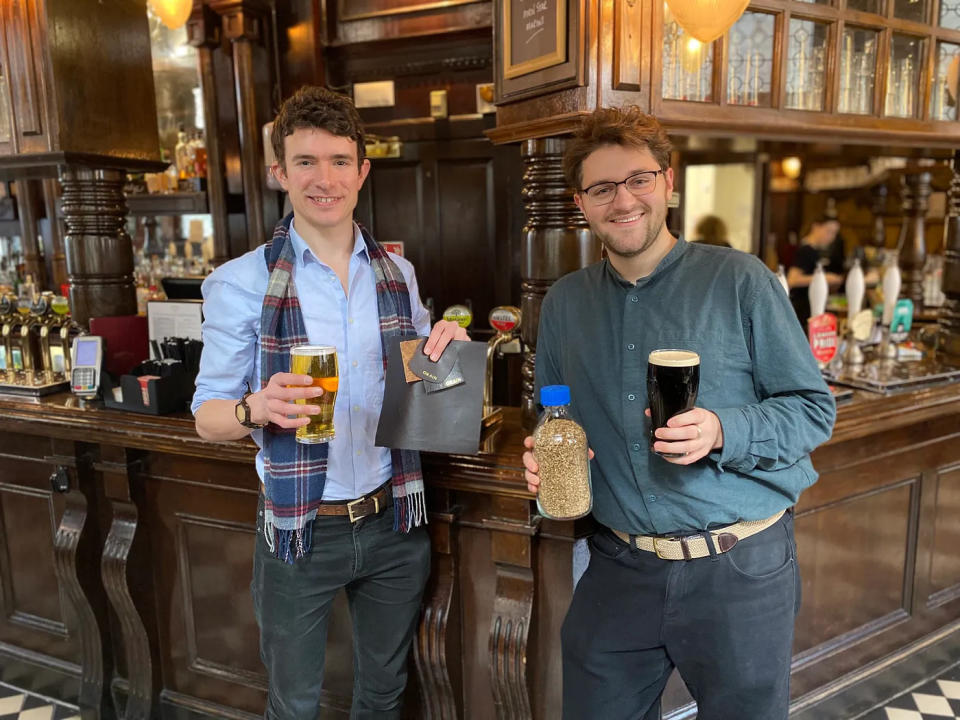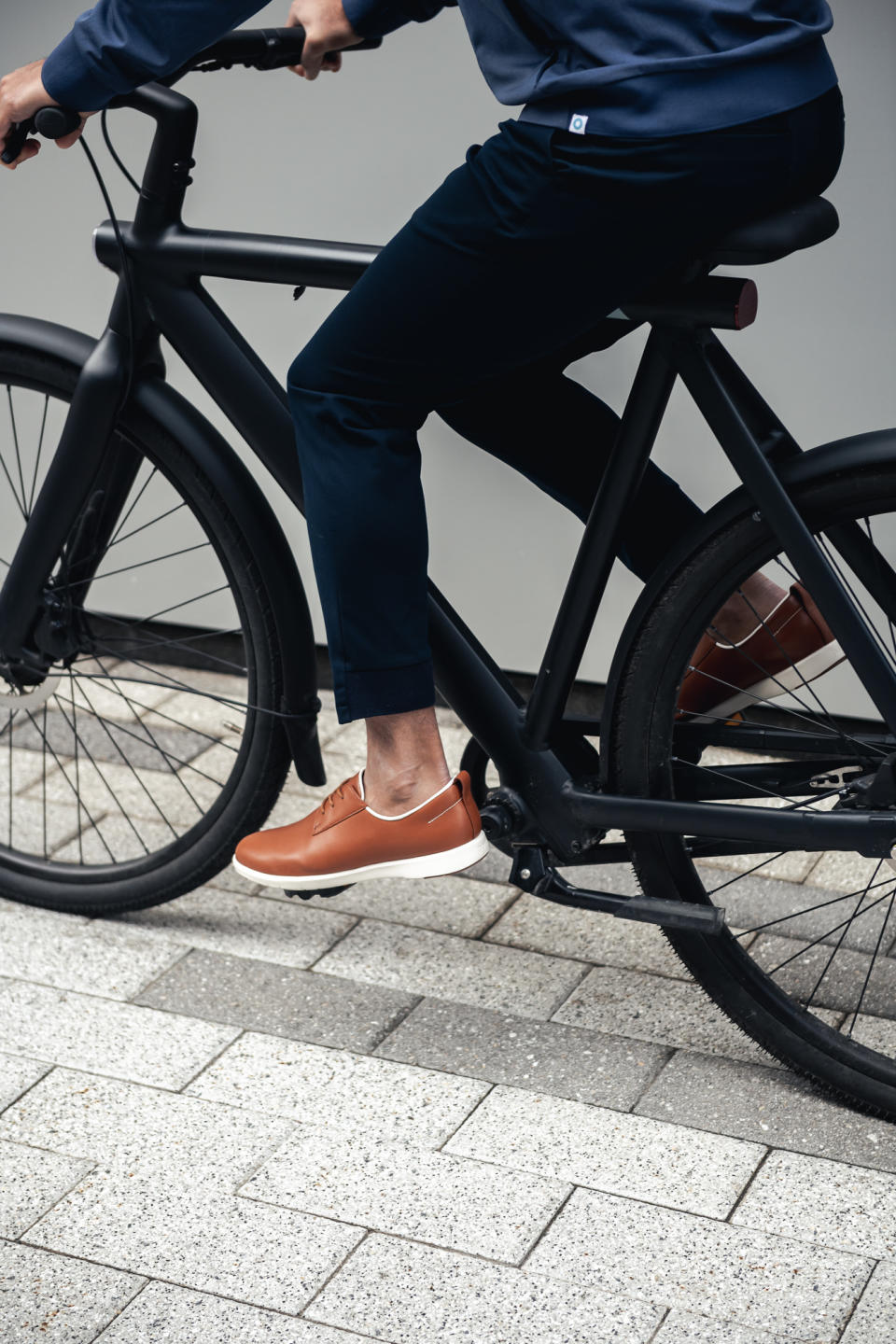Material World: Bankable Byproducts from Bananas and Beer

Material World is a weekly roundup of innovations and ideas within the materials sector, covering news from emerging biomaterials and alternative leathers to sustainable substitutes and future-proof fibers.
Interloop, Dinner Service NY

Indie fashion brand Dinner Service NY is working with Pakistan’s Interloop Limited to use banana stems as a fiber input. It’s the first of the manufacturer’s clients to incorporate the new material, which Interloop has spent the past three years developing with the National Textile University Faisalabad in Pakistan.
More from Sourcing Journal
Dinner Service NY co-founder Gabrielle Gomes said the collaboration was born from all the “noise” about upcycling plastic bottles into new virgin polyester, which is far less efficient than turning old bottles into new ones. “When we become more knowledgeable about that plastic upcycling piece, particularly, is when we were like, this has to stop,” she said.
The digital brand, which has a store in SoHo and sells clothing such as crewnecks, cardigans, henleys and half-zips, hopes using the banana stem fiber will inspire bigger Interloop clients such as Nike, Adidas, Puma and H&M to adopt the upcycled agricultural waste after it launches a test case with socks this month.
“The reality right now is that natural materials [are] the only commercially viable solution,” Trina Assur, co-founder of Dinner Service NY, said, stating that while cotton is said to be a thirsty crop with its own drawbacks, it’s at least biodegradable and plastic-free. She went on to say that “banana fiber feels very on brand for where we see the future of fashion going.”
With more than 35,000 hectacres cultivated for banana crops, Pakistan is one of the region’s biggest producers of the fruit, giving domestic textile manufacturers straightforward access to the raw material. Conventional machinery spins the banana fiber into yarn suitable for hosiery, denim and knitted apparel. But figuring out how to turn the banana-borne fiber into a viable textile input was “no walk in the park,” Interloop said.
“Traditional fibers are blessed with the technology and advancement in machine and equipment, along with tons of research and development,” it said. “For the new fibers, using existing technology with new required processes was an uncharted territory and was quite challenging.”
The banana stem’s cellulosic building blocks lend fibers a desirable length, tensile strength that’s said to outperform cotton, good moisture absorption and breathability, and dyeing capabilities on par with cotton. Right now, banana stem fiber can make up 20 percent of a yarn, with the rest composed of cotton, according to Interloop, which hopes additional R&D will produce a yarn with up to 20 percent more of the banana material. This reduced reliance on cotton cuts the water consumption and land impacts needed to grow the fluffy white stuff while keeping farmers from burning agricultural byproducts and generating unnecessary carbon emissions.
But because the banana stem is a bast fiber—collected from the phloem, or bast, surrounding the stem of certain plants—it’s not as soft as cotton and must be blended with another natural fiber to create a marketable hand feel.
“At the end of the day, organic cotton is not the silver bullet or proper solution,” Gomes said. “So for us, it’s like even if we can start at like 10 percent, 15 percent banana fibers, saving some of that virgin cotton from the supply chain, that’s better than nothing.”
Arda Biomaterials

Founded in 2022, London-based Arda Biomaterials raised $1.4 million to advance its mission to transform waste into valuable, animal- and plastic-free leather alternatives. Clean Growth Fund, a UK clean-tech venture capital fund, led the round, which drew participation from Plug and Play, Serpentine Ventures, Satgana and a group of angel investors.
“The advent of cheap plastics wiped out a century of innovation in using natural inputs to make materials. Now, with sustainability in mind, we are discovering that the natural world has all the building blocks need to create marvelous and sustainable products,” said Edward TJ Mitchell, co-founder and chief technology officer of Arda, who holds a Ph.D. in chemistry. “The production of leather is particularly resource intensive and the current alternatives are riddled with plastic. The chemical composition in waste grain is uniquely suited to be transformed into a material that can resemble many of the properties of leather and more.”
Arda leans on chemistry and materials science to turn the beer brewing industry‘s barley grain waste into a leather alternative it calls New Grain. It will soon conduct biodegradability tests of the plastic-free material that accommodates custom finishes, patterns and colors.
“Many people believe leather is a by-product of cows; it’s really more of a co-product that subsidizes the continuation of animal agriculture,” said Brett Cotten, Arda’s co-founding CEO and a veteran of the alternative protein sector. “The spent grain from breweries is typically burned, sent to landfill, anaerobically digested into gas, or fed to animals as cheap food—all very low-value use cases. I am thrilled that we can skip the cow to create a truly novel product that, to date, has been 100 percent animal and plastic free. Now we can drink our beer and wear it, too. This financing round led by Clean Growth Fund will allow us to get a finished material that we can begin selling to brands and put into consumers’ hands. I can’t wait to see others wearing it.”
Arda is working with breweries along the “Bermondsey Beer Mile” in South London, once known as the city’s tanning district.
“We are delighted to invest in Arda Biomaterials and support the commercial development of their work: it’s a truly innovative solution to a significant environmental challenge,” Susannah McClintock, investment director of Clean Growth Fund, said. “Arda’s technology has the potential to disrupt traditional leather production and significantly reduce the environmental impact of highly polluting sectors. We look forward to working with Brett, Edward and the team to help bring this exciting technology to market.”
Arda’s New Grain was shortlisted as a finalist in the H&M Global Change Award program in March. In the next 12 months, the startup expects to have a finished material ready for consumer brands to use in limited amounts.
Natural Fiber Welding, Ministry of Supply, Ponto Footwear

Ministry of Supply and Ponto Footwear worked with National Fiber Welding (NFW) to launch a plant-based, animal-free dress sneaker made with the latter’s Mirum material.
“We’re thrilled to partner with Ministry of Supply and Natural Fiber Welding, who helped us to create our first-ever plant-based shoe,” Aaron Roubitchek, founder of Ponto, said. “We believe in products centered around function, fashion and sustainability, and this collaboration is a testament to that.”
The $198 dual-gender PlantForm Pacific shoe in Carbon and Sepia colorways offers “zero-compromise” sustainability.
“I remember when Gihan [Amarasiriwardena] first bought me a pair of Ponto shoes,” Aman Advani, Ministry of Supply’s CEO and co-founder, said. “I remember having this ‘aha’ moment of, ‘This is the footwear equivalent of Ministry of Supply,’ which was my first signal that there was a great experience to be had here.”
The trio went beyond simply using Mirum, which NFW describes as the world’s first plastic-free leather alternative made from responsibly sourced natural rubber, plant-based oil, natural pigments and minerals. Ministry of Supply’s flagship Apollo fabric lines the inner shoe and footbed to optimize temperature and offer sweat-free wear. The outsole is made with a bio-based foam technology using responsibly sourced sugarcane.
The PlantForm Pacific shoe shows “how collaborations can drive responsible production for people, animals and the planet we share,” Luke Haverhals, CEO and founder of NFW, said of the fossil and petrochemical-free footwear available through Ponto. Progressive brands such as Ponto and Ministry of Supply, he said, “understand the importance and the power of nature.”
Solve the daily Crossword

